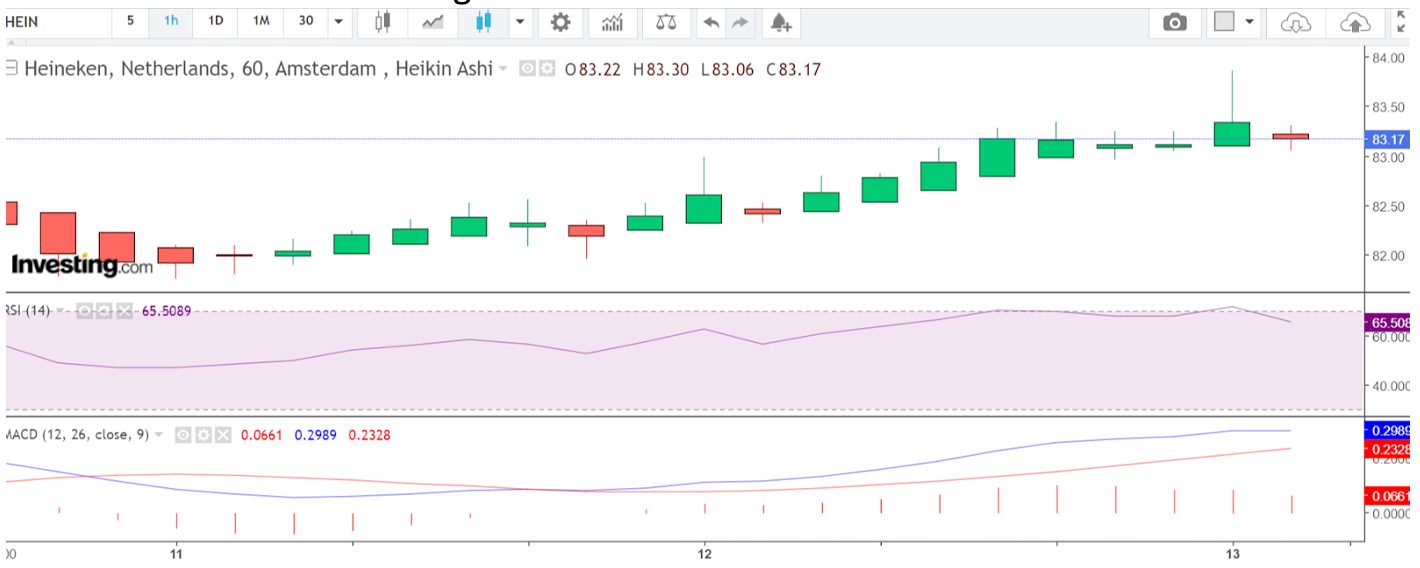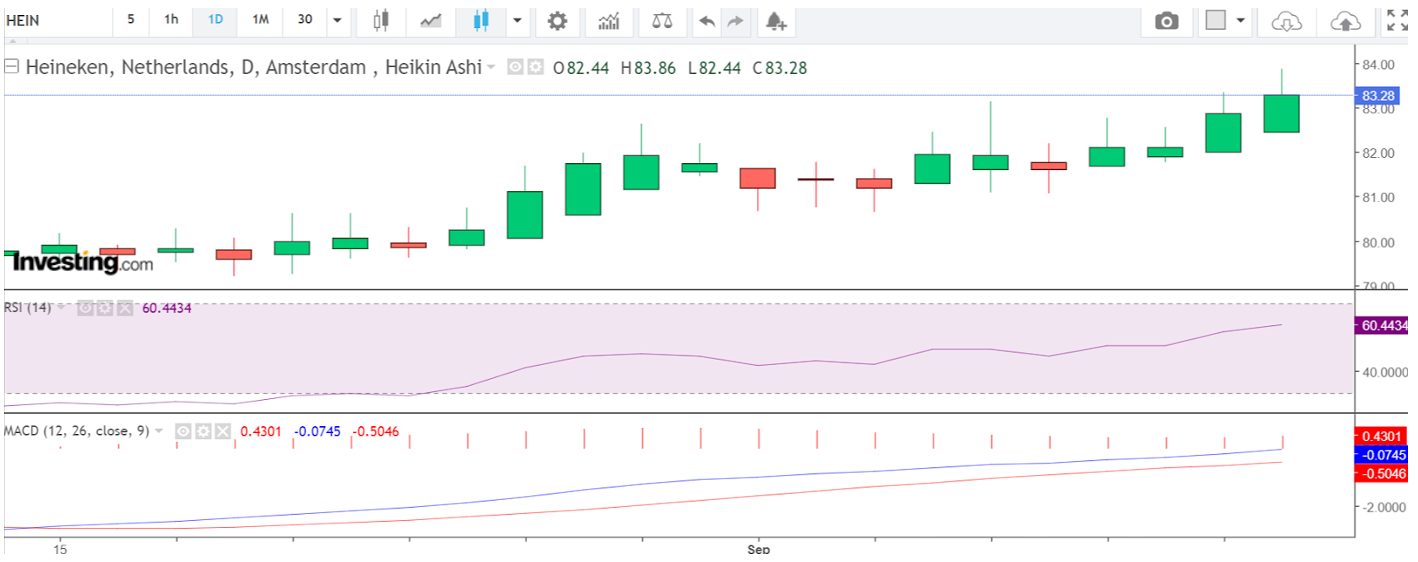CFD Trading in The Netherlands



Contract for difference (CFD) trading is gaining momentum in the Netherlands due to an attractive feature: it allows you to speculate on a financial instrument’s price movement without owning the underlying asset.
CFDs are tightly regulated by the Dutch Authority for the Financial Markets (AFM), which has raised concerns about their risks since 2011, culminating in investigations and product interventions to protect retail investors.
Looking to start trading CFDs in the Netherlands? This guide for beginners will arm you with the essentials.
Quick Introduction
- CFDs allow you to profit from rising and falling markets with leverage to amplify results. It requires effective risk management through careful position sizing and stop-loss orders.
- You agree with a broker to exchange the difference in an asset’s price from when the contract is opened until it is closed. If the price moves in your favor, you profit; if not, you make a loss.
- CFDs allow you to trade a variety of markets, including Dutch stocks, indices like the AEX, forex pairs like EUR/USD, and commodities like natural gas with a key gas hub in Groningen.
- The Dutch AFM regulates CFD trading in the Netherlands and enforces rules to protect retail investors, notably leverage limits, risk warnings, and negative balance protection.
Best CFD Brokers in The Netherlands
After our exhaustive tests, these 4 brokers are the obvious choices for CFD traders in the Netherlands:
CFD Brokers in The Netherlands
How CFD Trading Works
Essentially, CFD trading allows you to bet on whether the price of an asset – be it a Dutch stock, currency pair containing the euro, or volatile crypto – will increase or decrease.
An attractive feature of CFDs is leverage. This enables you to manage substantial positions with a modest upfront investment, referred to as margin.
Consider you anticipate a rise in the AEX index, the benchmark Dutch stock index. Suppose the price of one CFD contract on the AEX is set at €900, and your broker mandates a margin of 5%.
If you decide to trade 10 contracts, your total required margin would amount to €450 (€900 x 10 contracts x 5%).
If the AEX index subsequently rises to €960, you stand to gain €60 per contract. Your total profit would be €600 (10 contracts x €60), minus any brokerage fees.
Conversely, if the AEX declines to €840, your loss would be €600, emphasizing the risks involved.
For Dutch investors new to CFDs, a demo account can be invaluable. This will allow you to practice trading in a simulated environment without financial exposure.
Is CFD Trading Legal In The Netherlands?
The Dutch AFM, a ‘green tier’ body in DayTrading.com’s Regulation & Trust Rating, regulates CFD trading to ensure it is conducted fairly and transparently.
The AFM has been vocal in its concerns about the risks and the marketing techniques adopted by providers:
- 2011: The AFM echoed a warning from ESMA about the risks of trading CFDs.
- 2015: A report by the AFM concluded that CFD providers expose investors to unnecessary risks.
- 2017: The AFM consulted the market on the possibility of implementing an advertising prohibition for CFDs with leverage of 1:10 or higher.
- January 2019: The AFM announced it was investigating the need for national measures regarding the sale of CFDs in the Netherlands.
- March 2019: The AFM prepared to implement restrictions on CFDs.
- 2021: The AFM introduced intervention measures to restrict the marketing, distribution, and sale of CFDs to retail investors.
The AFM limits leverage to protect retail traders and caps it at lower levels than professional accounts to reduce the risk of significant losses:
Leverage is limited to 1:30 on major currency pairs like EUR/USD, 1:5 on Dutch and global stocks, reflecting the risk associated with trading individual shares, and 1:2 on cryptocurrencies like Bitcoin due to huge price swings that can lead to whopping losses.
Brokers must also provide clear risk warnings to ensure traders understand the potential for losing money when trading CFDs.
Negative balance protection should be in place to ensure that traders cannot lose more than their initial investment, preventing them from owing money to the broker.
Dutch CFD providers cannot offer bonuses or other incentives to encourage high-risk trading among retail clients.
Is CFD Trading Taxed In The Netherlands?
CFD trading is taxed in the Netherlands, but how it is taxed depends on your circumstances, such as whether you are trading as a private individual, a professional trader, or a company.
The Tax Administration (Belastingdienst) collects taxes for private individuals. Assets like savings, investments, and CFDs fall under a tax on net wealth. You’re taxed based on the value of your assets on 1 January of the tax year minus your liabilities.
There is a tax-free allowance (around €57,000 per individual), which can vary annually. Amounts above this threshold are taxed at progressive rates.
The Netherlands does not impose a specific capital gains tax on private individuals’ profits from CFD trading. Instead, the total net worth is considered for taxation.
You must report your assets, including any CFDs, in your annual tax declaration. This usually involves declaring your total net wealth and keeping detailed records of your trades, including profits, losses, and transaction dates.
An Example Trade
To show you how a CFD trade in The Netherlands could really unfold, let me walk you through an example…
I’m focusing on a Dutch stock in this example trade: the famous brewer Heineken (HEIN), listed on the Amsterdam Exchange (AEX).
Fundamental Analysis
The fundamental analysis required to make informed decisions about CFD stock trading differs from that needed to decide on other securities like forex or indices. You must look at factors such as the stock’s overall performance and sentiment from respected analysts. So, let’s start there:
- Analysts’ sentiment suggested a strong buy; some had a target price of around €97.12, quite far from the then today’s price of around €82.00
- The market cap was €46.52b
- The P/E ratio was 44.24
- The net income was €1.05b in the last report
- The 52-week range of the share price was €78.82 – €97.85
These metrics support my view that as a long, day/swing trade, Heineken (HEIN) represented good value and had potential upside.
Technical analysis
When considering day or swing trades, I always focus on two time frames: a lower one, like the 1HR (hour), and a higher one, like the D1, the daily.
That gives me a broader perspective on short – and long-term market sentiment. I’m looking for evidence that, on the charts, the longer-term perspective will underpin any short-term view I have.
I prefer Heikin Ashi (HA) bars to standard candlesticks. HA smooths out the open, high, low, and close and delivers simpler patterns to identify and act on, which is crucial when you’re dealing in fast-moving markets and don’t have the luxury of procrastination.
I avoid littering my charts with too many technical indicators because many replicate the same information. I’m always looking to simplify my decision-making process to avoid what I term “analysis paralysis”.
I use RSI, which reveals volatility while illustrating oversold and overbought conditions. I also use MACD, which, as an oscillator, indicates momentum and shows if a trend is coming to an end and if the direction is about to reverse.

Looking at the above 1HR time frame, the HA bars gave me the confidence to take the long trade, as the closed bullish bars mostly printed higher highs throughout the day’s sessions. The momentum tailed off towards the close of trading on the AEX.
The RSI indicated that the volatility was subsiding, and with a reading close to the 70 overbought level, the decision to close the trade at the end of the session looked valid.

Analyzing the daily time frame supported the initial long trade decision; closed HA bars printed higher highs over recent days, the MACD moving averages have diverged, and the histogram was bullish.
Combined with the RSI being above the median line of 50 but short of the overbought 70 area, these factors gave me confidence that the current momentum was sustainable.
Execution
My market order was executed at 82.32, and my stop loss order was placed at 81.88 (a recent two-day low). The trade automatically closed on an end of day basis at 83.50.
My decision not to hold over and close the CFD trade appeared vindicated, as the stock price developed a holding pattern the following day during the European morning session.
Bottom Line
CFD trading offers flexible opportunities to speculate on Dutch, European and global financial markets, but success depends on managing risks and staying informed about market conditions.
Trading during high-liquidity periods, such as the London-New York overlap, and being aware of economic events can enhance your experience. So too will choosing a provider regulated by the AFM or a comparable EU regulator.
However, never risk more than you can afford to lose.
To start dealing, use DayTrading.com’s selection of the top CFD trading platforms in the Netherlands.
Recommended Reading
Article Sources
- Dutch Authority for the Financial Markets (AFM)
- CFD Product Intervention - AFM
- Tax Administration (Belastingdienst)
- Amsterdam Exchange (AEX)
- Heineken (HEIN)
The writing and editorial team at DayTrading.com use credible sources to support their work. These include government agencies, white papers, research institutes, and engagement with industry professionals. Content is written free from bias and is fact-checked where appropriate. Learn more about why you can trust DayTrading.com



